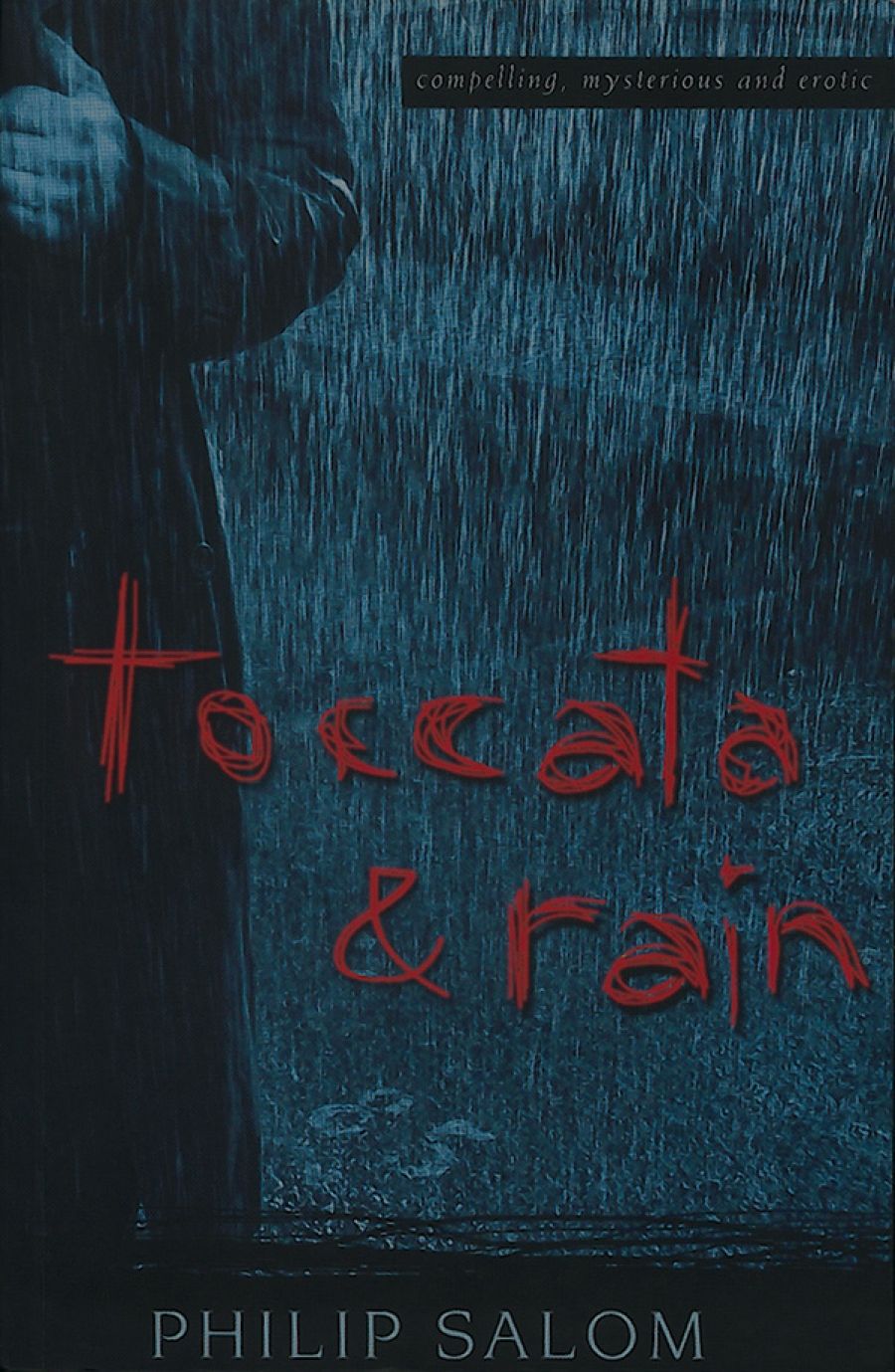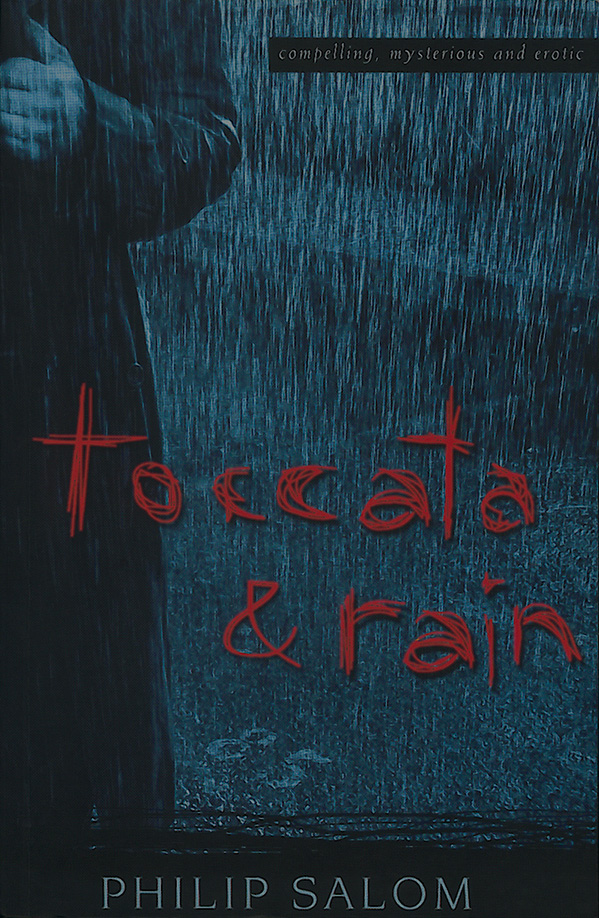
- Free Article: No
- Contents Category: Australian Fiction
- Review Article: Yes
- Article Title: Memory Reel
- Online Only: No
- Custom Highlight Text:
Philip Salom’s poetry has won many awards since his first collection, The Silent Piano, was published in 1980. His poems range widely and have often included fantastical elements, most notably in Sky Poems (1987). The opening of Sky Poems enjoins the reader to ‘Throw out the world’s laws’, promising: ‘Anything you wish, possibly more!’ Such poetry seems to proceed from the assumption that fiction can, after all, be stranger than truth. And, despite its variousness, Salom’s work often returns to certain kinds of strangeness.
His second book, The Projectionist (1983), is a kind of proto-novel constructed as a collection of poetry. It is impossible to summarise this book neatly, but it foregrounds the sensibility of a character called Mr Benchley, a retired film projectionist whose ‘reality’ is partly filmic. In this work, Salom investigates the elusiveness of human experience and reflects on how experience may be represented suggestively through audiovisual technology. He writes in one poem, ‘This playback of life’s feeding / every thread of the rough cocoon’ – the ‘cocoon’, among other things, being the self-reflexive activity of a lonely life.
Playback (1991) became the title of Salom’s first novel, recently reissued. The main protagonist is a male oral historian and folklorist living as a visitor in a country town. At the core of Playback is a mystery centred on a possible, and unsolved, crime, along with the erotic charge of an adulterous relationship between the oral historian and an artist. The novel progresses by counterpointing the past – captured in a growing, if precarious, store of taped oral histories – with the historian’s evolving and increasingly destabilised present. The dynamic is fairly merciless. Various forms of disintegration occur; the novel’s conclusion answers some key questions but leaves others unresolved. In both The Projectionist and Playback, people are shown never to be free of their pasts, even though they remember their lives poorly. They are depicted as often creating themselves and their fantasies on the ground of their own forgetting.
- Book 1 Title: Toccata and Rain
- Book 1 Biblio: FACP, $24.95pb, 302pp
- Book 1 Cover Small (400 x 600):

- Book 1 Cover (800 x 1200):

His second book, The Projectionist (1983), is a kind of proto-novel constructed as a collection of poetry. It is impossible to summarise this book neatly, but it foregrounds the sensibility of a character called Mr Benchley, a retired film projectionist whose ‘reality’ is partly filmic. In this work, Salom investigates the elusiveness of human experience and reflects on how experience may be represented suggestively through audiovisual technology. He writes in one poem, ‘This playback of life’s feeding / every thread of the rough cocoon’ – the ‘cocoon’, among other things, being the self-reflexive activity of a lonely life.
Playback (1991) became the title of Salom’s first novel, recently reissued. The main protagonist is a male oral historian and folklorist living as a visitor in a country town. At the core of Playback is a mystery centred on a possible, and unsolved, crime, along with the erotic charge of an adulterous relationship between the oral historian and an artist. The novel progresses by counterpointing the past – captured in a growing, if precarious, store of taped oral histories – with the historian’s evolving and increasingly destabilised present. The dynamic is fairly merciless. Various forms of disintegration occur; the novel’s conclusion answers some key questions but leaves others unresolved. In both The Projectionist and Playback, people are shown never to be free of their pasts, even though they remember their lives poorly. They are depicted as often creating themselves and their fantasies on the ground of their own forgetting.
Salom’s new novel, Toccata and Rain, takes up and complicates many of the preoccupations, and some of the imagery, of these earlier works. It presents a lonely, self-reflexive main character, variously called Simon or Brian, who, as an amnesiac, twice ‘visits’ a life in which, according to his history, he doesn’t belong. Yet, in his fugitive, twice-invented life, he accomplishes a great deal that is artistically and erotically satisfying, including making towers in a suburban Melbourne backyard that, while a kind of parody of the architect Antoni Gaudí’s work, are his most satisfying artistic achievements. Simon/Brian gains a deeper understanding of intimacy through the embraces of two women he does not know well, and in whom he appears only occasionally interested. His physical and intellectual dislocation, and the disabling of his memory and identity, are revealed, paradoxically, as self-enabling.
The book plays in a number of different ways, both structurally and linguistically, with ideas of toccata and fugue (in both the musical and the psychiatric senses). Numerous small poems and prose poems are included as part of the novel’s text, much like a series of virtuosic musical improvisations, representing the main protagonist’s ruminative, often eccentric point of view. Overall, the novel has a polyphonic and contrapuntal feel, obsessively enunciating and developing a limited number of themes through a restricted range of different voices and alternative points of view, as if its texture and structure are intended as a verbal mirror of the amnesiac’s clouded experiences and intentions. Film features strongly in this work as a kind of memory, and the idea of playing back experience – through film and hypnosis – is central. In one of the novel’s poems, Simon/Brian comments: ‘I feel my own life running backwards into hers.’
The effect of reading Toccata and Rain is sometimes puzzling because it does not present all of the satisfactions of a conventional novel. Consistent with the work’s disrupted world, where people’s knowledge of one another is always provisional and questionable, the main characters are only imperfectly known even when sexually intimate. The two psychiatrists who figure in the work are oddly conniving and unsophisticated, as if the author is determined to allow the reader only Simon/Brian’s view of them. Further, the novel’s numerous poems tend to disrupt its narrative flow, forcing one, time and again, into the amnesiac’s strange consciousness of himself.
The strengths of Toccata and Rain lie in the evocation and embodiment of a life disrupted by early crisis; in the unusual rendering of an uncommon psychiatric condition; in the linguistic, if (intentionally?) uneven, pleasures of Salom’s protagonist’s poetry; and in the novel’s probing at what makes up accepted ideas of identity and identifiable meaning. Nothing is fixed, even at the end. Salom seems to be suggesting that any quest for a clarified and stable narrative is, at best, an unrealisable dream.


Comments powered by CComment